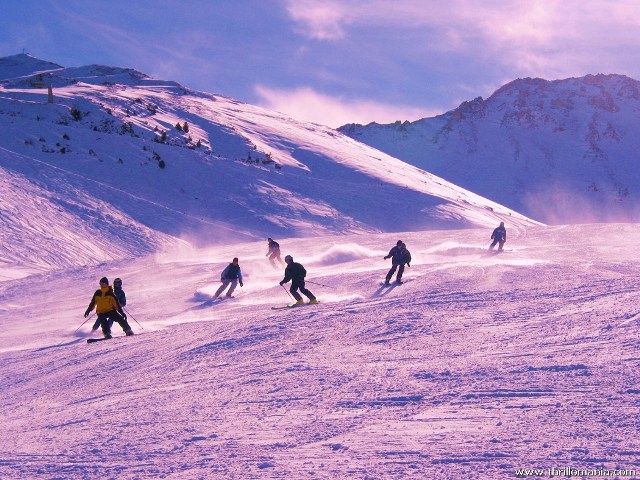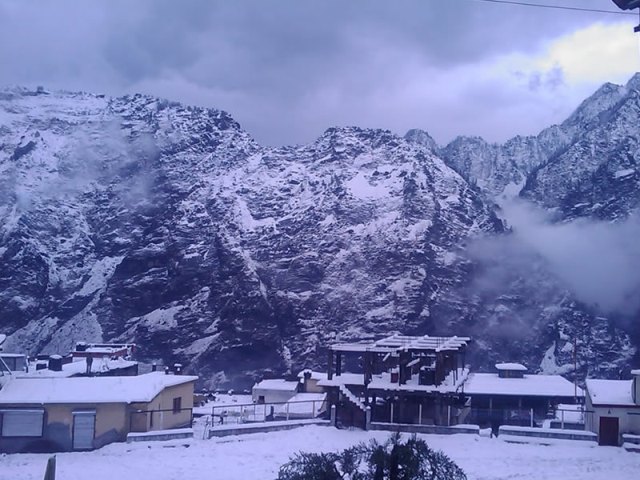The Spiritual Metaphor
Deoprayag is a beautiful showcase of traditions, myths and mysticism. This is the place where the holy rivers Bhagirathi and Alaknanda meet, making it a unique pilgrimage like the prayag of Allahabad. From here onward two rivers merge into take the name of ‘Ganga’. Deoprayag though situated, just at an altitude of 618mt from the sea level, is endowed with abundant natural beauty.
According to a belief, Lord Rama and his father King Dasharatha did penance here. The main temple is the ‘Raghunath Temple’, dedicated to Lord Rama.
The bathing ghat at Deoprayag is built with multiple levels to accommodate different water levels during the monsoon. It is also the winter home of the Badrinath pandas.
Deoprayag is a pilgrimage centre of great significance. In Treta-yuga, Lord Rama and Lakshman performed a yajna here to atone for killing Ravana, who was a Brahmin. The ancient Raghunath temple here with a 15-foot tall deity of Sri Rama (Sri Raghunath) is one of the 108 most important temples in India. In front of the temple is a statue of Garuda. Behind the temple and slightly up a hill is Vamana’s cave and nearby is Lord RAma’s stone throne.
What to See
Raghunathji Temple: The ancient temple dedicated to Lord Rama, the epic hero of Ramayana. An impressive black granite statue graces the temple. Every day the devotees congregate at the temple to pay obeisance, after taking bath in the holy confluence. The walls of the temple display exquisite sculptures that show Buddhist influence.
Bharat Mandir: Relatively unknown, but this small temple is a beautiful example of hill temples. Named after Bharat, Rama’s younger brother. The bigger Bharat Temple is at Rishikesh, but it is also much revered. Historically, after the
Muslim invasion in north India, the priests lift the holy city of Rishikesh and the idol was placed here for several centuries. Later it was taken to its original location, Rishikesh. Its worth visiting, to feel the pulse of Hindu mythology and beliefs.
Beyond Deoprayag
Chandrashila: A gigantic boulder in the mid of Bhagirathi river, at a distance of 2km from Deoprayag. According to legend, king Dasaratha, father of Lord Rama meditated here for the salvation of his ancestors. A holy dip at this place, is believed to get one’s wishes fulfilled.
Chandrabadni: At an altitude of 2,756mt above sea level at a distance of 30km from Deoprayag to Jamnikhal on the Tehri road. A separate road leads to the temple from Jamnikhal(7km) followed by a trek of 1km. Reaching there you can have a breathtaking view of the Himalayan peaks and the river flowing below .A small temple is situated at the hilltop. An ideal place for total spiritual expedition.
In the month of April, this sleepy corner of the hil bubbles with activities. A fair is held here, which sees devotees congregating from different parts of the Himalayan region to witness the spiritualism revered in Chandrabadni temple.
How to Reach
Air: The nearest Airport is Jolly Grant at Dehradun, 90km. The nearest railhead is at Rishikesh 70km.
Rail: Deoprayag is at a distance of 70km from Rishikesh.
Road: Deoprayag is well connected with Rishikesh and Dehradun and other parts of the Garhwali Himalayas.
Where to Stay
- Tourist Rest House—GMVN
- PWD Inspection Bungalow
- Private Hotels
- Dharmashalas of Kedar Nath commitee – Badri Nath Temple
- Ramkund Resorts
- Tourist Guest House




















 Just as the benevolent nature has endowed Uttarakhand with a rich wealth of luxuriant forests, magnificent mountains and gurgling rivers, she has also blessed it with a number of excellent wetlands, including #AsanBarrage gar in Dehradun district, #PashulokBarrage near Rishikesh and Bheemer reservoir and the #Missarpur Ghat in Haridwar district, which are a haven for migratory fowls for their wintering.
Just as the benevolent nature has endowed Uttarakhand with a rich wealth of luxuriant forests, magnificent mountains and gurgling rivers, she has also blessed it with a number of excellent wetlands, including #AsanBarrage gar in Dehradun district, #PashulokBarrage near Rishikesh and Bheemer reservoir and the #Missarpur Ghat in Haridwar district, which are a haven for migratory fowls for their wintering. the specific flyways, to descend on the wetlands in the Indian sub-continent and other warmer places. They stay here till March and as the warmer days arrive, they bid adieu to their wintery abodes and, with their sure sense of direction, return to there native habitats far off for breeding,” says the noted avian biologist.
the specific flyways, to descend on the wetlands in the Indian sub-continent and other warmer places. They stay here till March and as the warmer days arrive, they bid adieu to their wintery abodes and, with their sure sense of direction, return to there native habitats far off for breeding,” says the noted avian biologist.





















